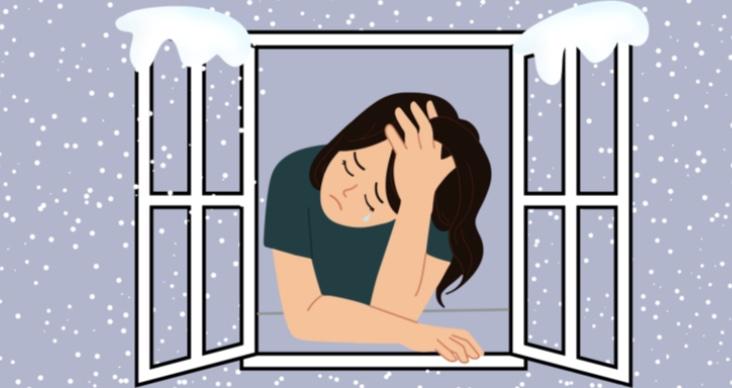Mainstream media characterizes winter as a time defined by holiday cheer, steaming-hot mugs of hot chocolate and cozy nights by the fireplace. But for many, the colder months are defined by gloom and hopelessness — the effects of seasonal depression. Because society tends to romanticize the winter months, seasonal depression is often overlooked and downplayed as a simple case of the blues. However, I believe seasonal depression should be treated as a genuine mental health issue, because it is not only common, but rooted in science.
Seasonal depression, medically known as Seasonal Affective Disorder (SAD), presents individuals with various symptoms. According to the Mayo Clinic, these symptoms include feeling worthless, having low energy levels, consistently experiencing sadness and being burdened by suicidal thoughts. Although SAD is typically associated with the winter months, summer-focused SAD also exists and is an equally valid problem. However, the Mayo Clinic distinguishes the two, explaining that symptoms of winter-related SAD are generally more depression-based while symptoms of summer-related SAD are often more anxiety-based.
But why do changes in nature affect mental health? How does our mental well-being relate to the environment, and how does science back this phenomenon? To answer these questions, researchers have identified some key influences of SAD. The Mayo Clinic explains that winter-related SAD likely corresponds with exposure to light. Because the fall and winter months offer less daylight, one’s circadian rhythm can be disrupted. When the circadian rhythm, or the body’s clock, is interrupted, symptoms of depression can transpire. Likewise, decreased daylight can impact one’s serotonin levels and cause them to drop. The result of these lower serotonin levels is depression, manifesting in the form of SAD. Finally, the Mayo Clinic contends that melatonin levels may impact SAD as seasonal transitions can affect one’s sleep schedule. Because sleep and mood are closely related, it is unsurprising that depression-related symptoms surface. Despite this information, the exact cause of SAD remains unknown. With time and research, the illness’ root will hopefully be understood entirely.
It may be easy to dismiss SAD-related symptoms and label the disorder as trivial, but in doing this, individuals can make the symptoms worse. The Mayo Clinic explains that, if left untreated, SAD can motivate individuals to self-isolate and abuse substances. Luckily, there are many ways to treat SAD and prevent symptoms from worsening. These treatments include therapy and antidepressants, which can be issued by a doctor.
Ultimately, I believe that society should stop viewing SAD as a negligible mental illness, because all mental health problems deserve attention. It is invalidating to claim that another person’s mental struggles are trivial, because everybody experiences depression differently. In supporting those experiencing SAD, we can continue to de-stigmatize mental illness. This de-stigmatization will help normalize treatment, creating a healthier and happier community.















































